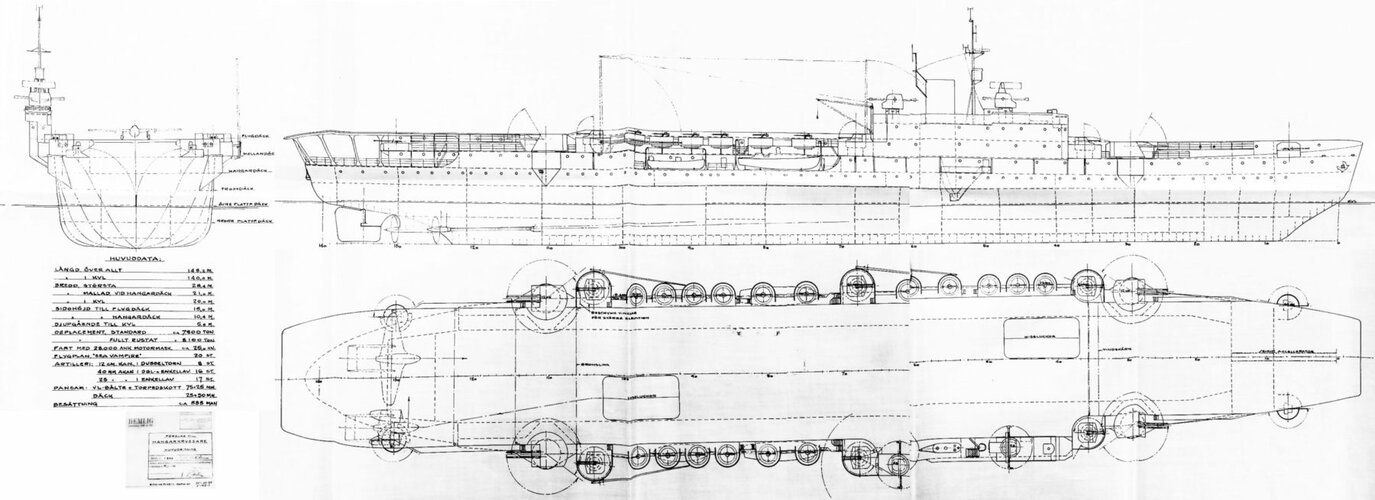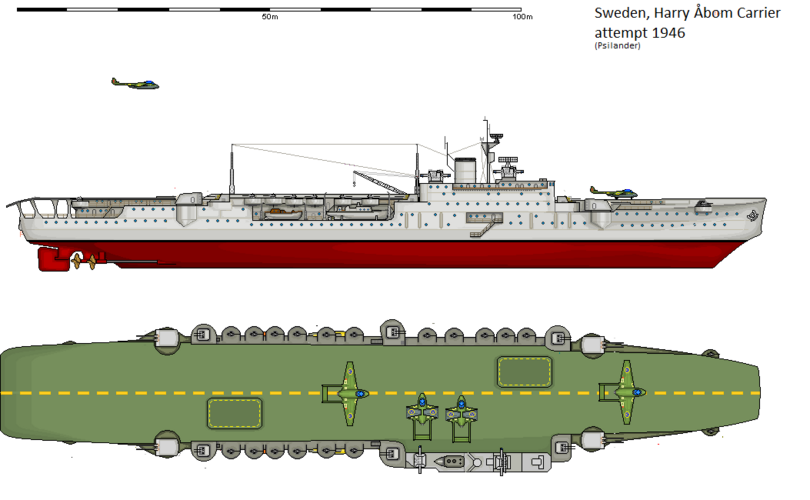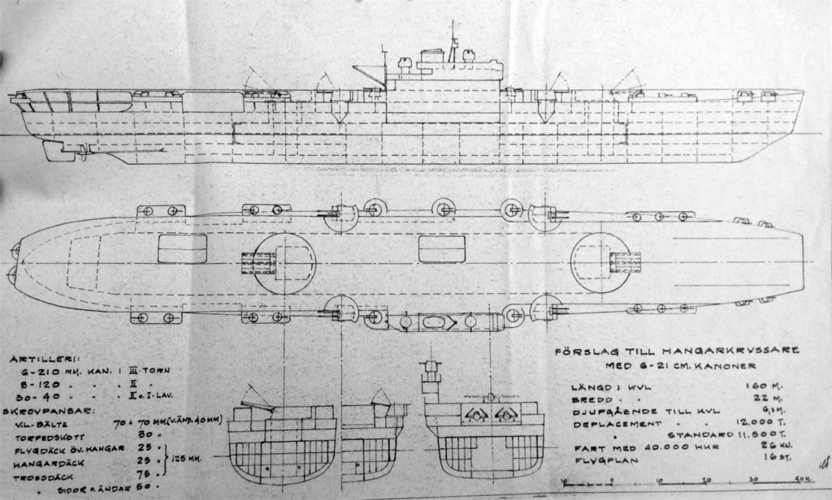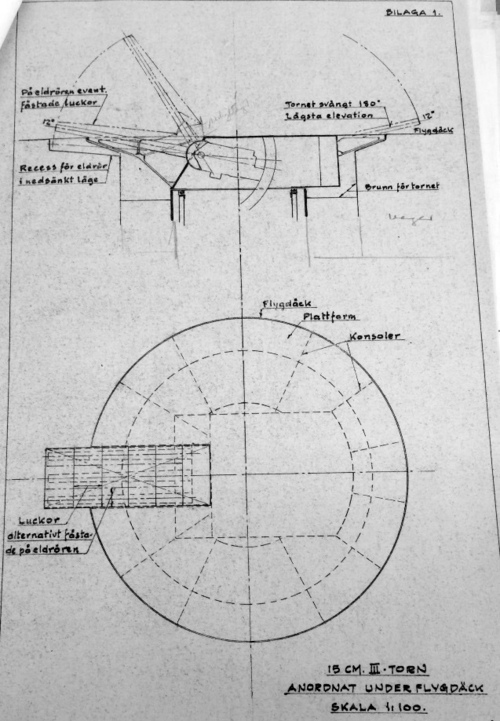Swedish CV
This project is only known from detailed sketches (but not plans). It was part of the ambitious naval plan of World War II, which saw a dramatic increase in shipbuilding, especially with the Tre Kronor cruisers, new destroyers and submarines. It was a fairly small aircraft carrier, displacing only 8,000 tons, well protected, armed and still carrying a supply of twenty fighter aircraft. It was perhaps too ambitious as a design due to the limited size and displacement, forced by the limited size of the Yards basins.
The overall appearance resembled a British aircraft carrier, with a large, rounded bridge island forward of an aft deck, two step lifts in the middle of a straight deck which, as shown in the view above, allowed only folding wing aircraft to be stacked alongside, little space available for aircraft to take off in a straight line from the rear of the deck - however, there was what could be a catapult forward ("even throttle"), otherwise these aircraft would have to take off in about 130 metres. The project was not very far from being a proposal to the Admiralty, there was no official name associated with it and it was never ordered. Conways is also silent on the matter. See the authority signing the sketch.
Specifications: as shown on the drawings
Dimensions: 140 m wide / 148.2 m wide x 20 m wide / 28.4 m wide long x 5.5 m long
Displacement: 7,800 tonnes standard, 8,100 tonnes FL
Machinery: 28,000 shp: 25 knots max.
Aviation: 20 de Havilland Sea Vampire carried
Armament: 4 × 2 12 cm, 16x 40 mm Bofors, 17 25 mm
Armour: 75 mm (3 inch) belt, 25 mm torpedo bulkheads, 25 + 50 mm deck
Crew: 535 men










